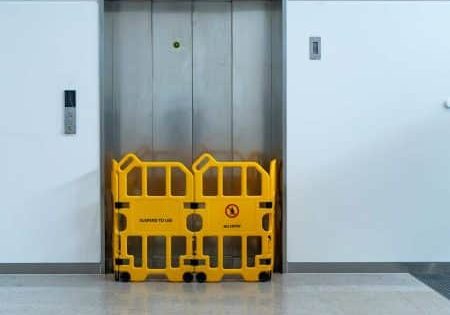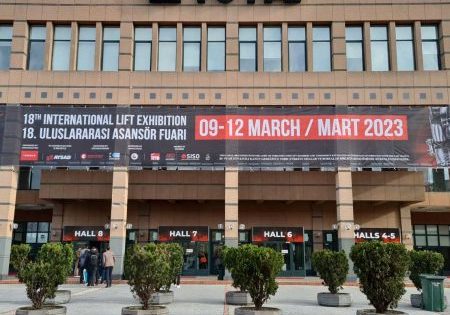Transforming Human Capital Into Competitive Advantage
May 23, 2023

In this Readers’ Platform, your author shares the importance of this transformation to the industry.
Human capital is considered the most important resource in any economy or organization, and it includes collective knowledge, skills, experience and health of the workforce. Many vertical-transportation (VT) professionals have memory of those early days: The industry was facing a serious skill crunch in VT, especially high-rise, high-speed elevator installation, inspection, maintenance and troubleshooting. With more than three decades of my journey in the VT industry, I see a remarkable transformation happening in human capital with a dual focus on developing people and managing them well to achieve more consistent results.
At a Glance
1. Transforming human capital into a competitive advantage is essential to any business today. As technology advances and markets become more global, human capital is an invaluable asset to create a distinct competitive advantage. Companies that recognize the value of their employees and invest in developing their skills, knowledge and abilities are the ones that create innovative products and services that differentiate them from their competitors. By leveraging the unique strengths of each employee, businesses can create a unified and powerful team that will have the potential to unlock greater success.
2. We can see visible change in VT employers, as they excel at building skills, creating more options for internal mobility and having better overall organizational health that helps their employees maximize the value of their own human capital. These effects persist long after individuals move on. Time spent by VT leadership early on in skill building in a positive workplace setting that emphasizes learning is the best predictor of whether employees eventually propel themselves into a company’s higher earnings bracket, relative to their starting point.
3. All of us agree that developing people is the right thing to do. Now, we are clear on how those efforts relate to the bottom line — and why some organizations are so much more effective than others at turning human capital investment into a real competitive advantage. Many programs are developed and implemented to transform people and improve performance through effective on-the-job coaching and training, widespread ownership and alignment, collaborative work culture, inclusive work environment, transparent performance expectations and incentives and support for initiative — with companywide innovation.
4. Leadership is also spending a good amount of time in upskilling and reskilling the workforce by offering expanded learning opportunities to speed up key VT initiatives like digital transformations, service excellence, adopting technology, improving productivity, expanding market coverage and turning chaos into brighter futures.
5. VT organizations have spent a good number of years building reserves of development, loyalty, goodwill and innovative capacity by investing in people, and now have more internal resources to draw on when the chips go down. This investment is paying off as VT companies are now able to provide better services and products to their customers.
By creating a supportive and encouraging environment, providing training and development opportunities and fostering meaningful relationships, an organization can leverage its human capital to gain a competitive edge.
Rising Awareness and Several Positive Developments
1. One very interesting observation is that a VT professional’s strong internal people relationship management has been a key to success. The most important resource available to any professional is relationships, including internal and external stakeholders. They set high expectations and goals, encouraging others to excel to support the customer requirements. Investing in people is the best way to invest in the future of a company. By creating a supportive and encouraging environment, providing training and development opportunities and fostering meaningful relationships, an organization can leverage its human capital to gain a competitive edge. By creating an environment that values and rewards employees, organizations can build a strong and successful workforce that will drive their competitive advantage.
2. Few companies prioritize developing employee performance and manage to deliver top-tier profitability. These companies are more likely to become large-scale “superstars.” People-plus-performance transformation is driven by VT firms that have a distinctive organizational signature that challenges and empowers employees while fostering bottom-up innovation. This management style seems to activate human capital and create a tangible competitive advantage.
3. Certain companies have developed a combination of organizational practices that are more effective at activating human capital. Organizational capital is the fabric that surrounds employees, and its pattern matters. It encompasses everything from training programs and talent-management and capability-building systems to workflows, department and team structures, business processes, employee communications, norms, culture and leadership.
4. Noteworthy people transformation programs in the VT industry:
- Interactive technical and soft skill building training platform
- Training on scaffold-less installation
- Instant feedback through module scoring to improve motivation, effectiveness and awareness
- Workshops to improve technical and safety knowledge
- Self-directed, repetitive training model to drive memory retention, supplement FACE to FACT training to clarify and build synergies
- Building people-process culture meaning standard processes, guiding principles, working norms and support systems
- Measures of success are:
- Business value/customer benefits
- Improvement in employee technical and safety knowledge
- Improved service
- Quality installations, no major rework identified during elevators inspection, cycle time reduction and customer satisfaction
- Focus on major projects: customer meetings, online major project reviews, timely documentation with clients
- Stage wise inspections
- Systematic tracking and improved usage of tools like PMT (Physical Measurement Technologies), laser tool, test weights
- Technician productivity and field cost reduction
- Sub-contractor management
- Dashboard for supervisors and field managers for greater accountability and challenging them to grow
5. Human resource decisions remain at the heart as companies develop new approaches to cope with these changes, for it is the quality of the people within the organization that enables its success. To achieve success on the talent front, workforce agility is key.
Key Observations
1. Human Resource Development (HRD) can play a more pivotal role in transforming human capital into competitive advantage for supporting business strategies and driving results.
2. While businesses fear talent shortages, more can be done to include workforce planning during the early phases of business strategy development.
3. In order to have a seat at the table, HRD must be data-driven to be able to demonstrate business impact. The challenge is many organizations lack reliable, usable data.
4. Benefits of contingent workers: access to specialist skills and expertise that lie outside the organization, ability to scale the workforce according to business cycles, skills not typically available in their permanent workforce, cost efficiency and ability to fill short-term project requirements.
5. Firms today are motivated to use contingent workers in order to access talent but have concerns about finding the right talent and integrating it within their organization.
6. Success transforming human capital into competitive advantage requires an enterprise-wide shift, and it all starts with HRD and business leaders pushing strategy to the forefront of the talent supply chain. Now more than ever, organizations need to make this shift not only to keep pace with the quickly shifting talent landscape, but to enable resourcing decisions that support their business strategy and deliver on value-based outcomes.
The VT industry has seen tremendous transformation over the past few years. Elevators and escalators are now much more energy efficient with advanced safety features and are connected to the Internet of Things (IoT) for real-time monitoring and diagnostics. Smart elevators are now being developed with features such as facial recognition, biometrics and voice control. The adoption of advanced technologies in VT such as AI and Machine Learning also helps improve the performance of elevators and escalators.
Additionally, the use of sustainable materials and renewable energy sources is also becoming more widespread in the VT industry. These transformations are helping make elevators and escalators more modern, efficient and safe. The key to VT industry transformation is people development. This is visible in terms of people’s hunger for performance and an aptitude to excel. People are the invisible infrastructure of the workplace; it is the glue that makes the whole entity greater than the sum of its parts. Although it does not explicitly show up on corporate balance sheets, it is the key to maximizing returns on human capital and on the physical, financial and other intangible assets a company holds.
Get more of Elevator World. Sign up for our free e-newsletter.









